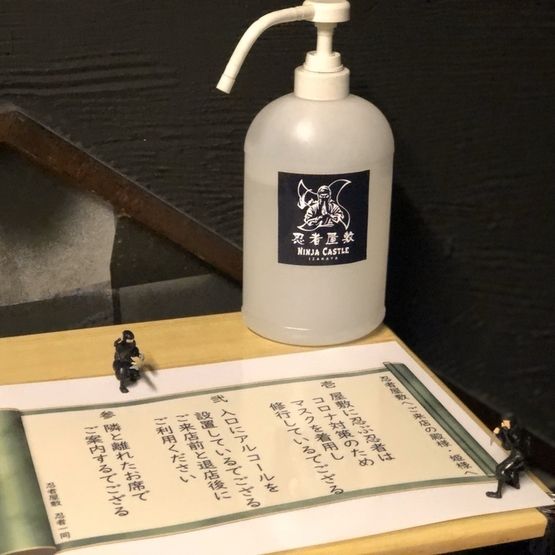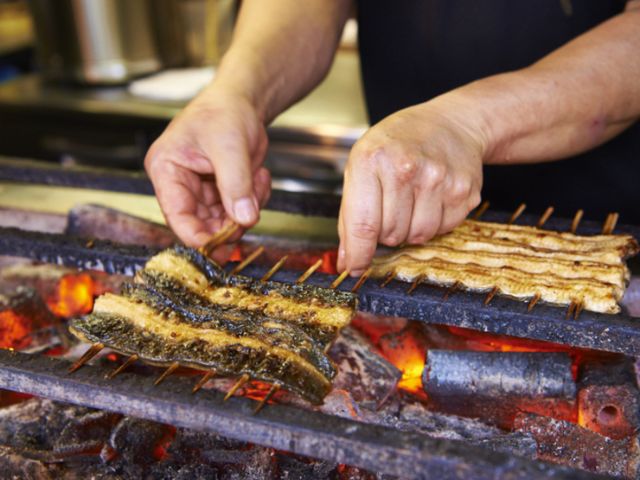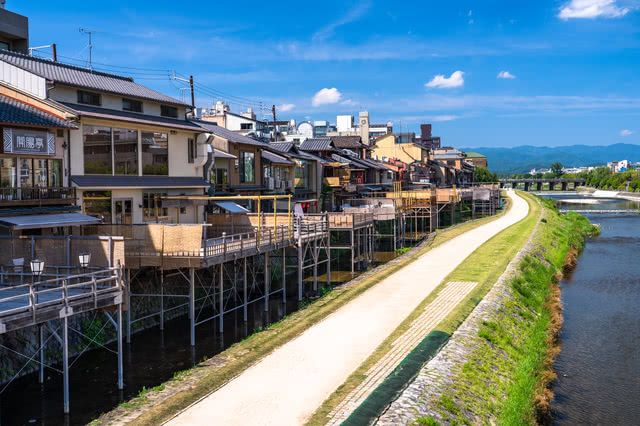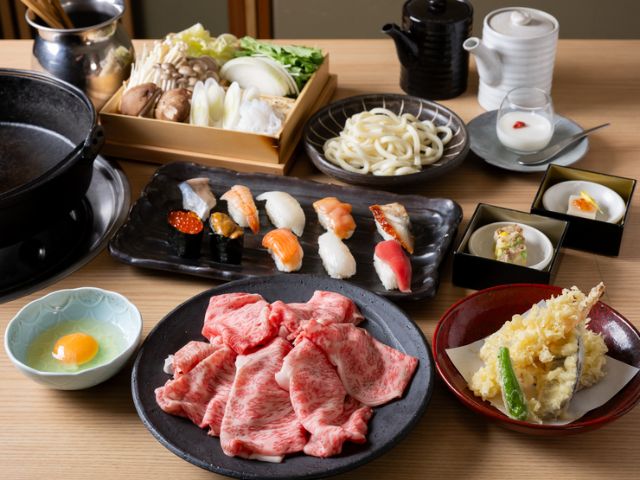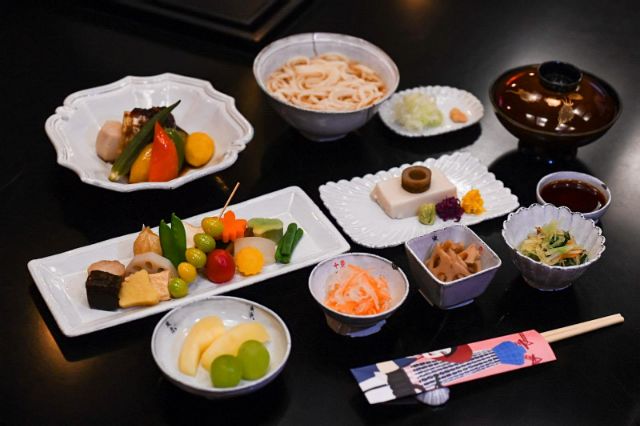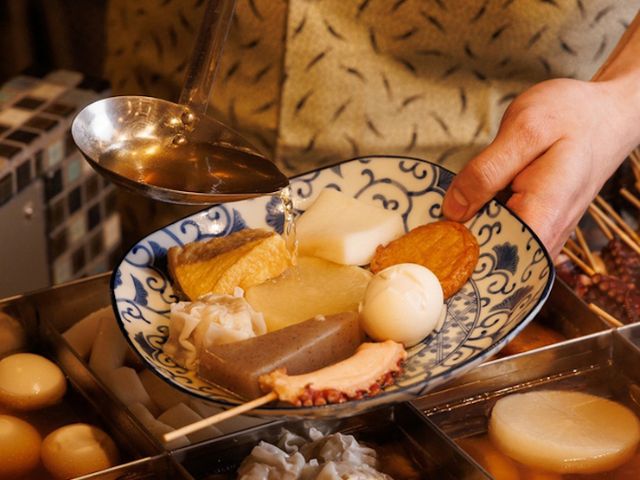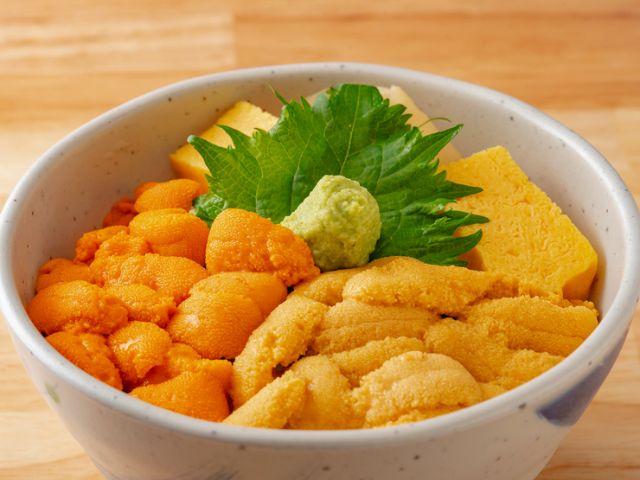Savor Unagi Eels on the Midsummer Day of the Ox!
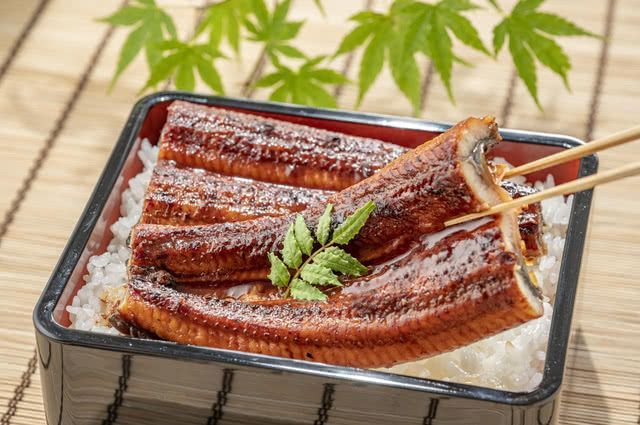
Why Do Japanese People Indulge in Eels During Summer?

Eels can be relished throughout the year, but in Japan, they are particularly favored as a "stamina-boosting food" during the summer. The reason behind this lies in the fact that the high temperatures and humidity prevalent in Japan during the summer often lead to people experiencing fatigue. In order to get rid of this fatigue, many of them actively consume nutritious foods, of which eel offers an abundance. They contain protein, which aids in muscle development, as well as vitamin A, which enhances immunity. Moreover, they boast vitamins B1 and B2, known for their fatigue-relieving properties, along with vitamin E, which exhibits potent antioxidant effects. Additionally, eels provide a rich source of zinc, calcium, iron, and more! Hence, they have gained renown as an ingredient that helps individuals recover from summer fatigue.
What Is “Doyo No Ushi No Hi” (Midsummer Day of the Ox)?

Ancient people believed that malevolent spirits emerged during seasonal transitions and devised various customs to seek good health. Particularly during the summer Doyo period, when heat and humidity made illnesses more prevalent, people started safeguarding themselves by consuming nourishing food. In the Edo period (1603-1869), the trend of indulging in eel on the summer Doyo no Ushi no Hi gained immense popularity and has endured as a tradition to this day. Notably, in the year 2023, there will be only one summer Doyo no Ushi no Hi, occurring on July 30.
Typical Japanese Eel Dishes
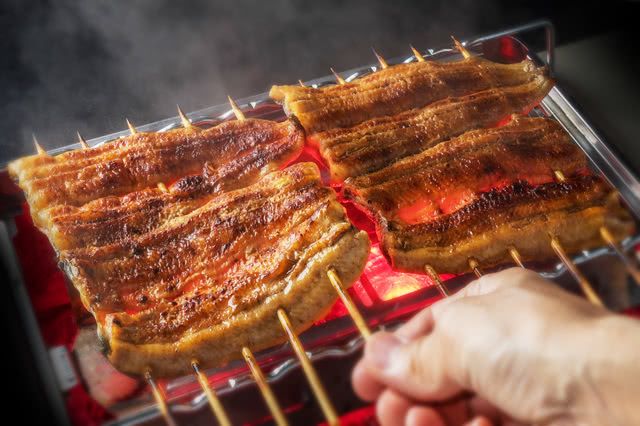
Eels are enjoyed in various countries across the globe, but they are often smoked or stewed, which differs from Japanese eel dishes. Here are some favored eel dishes in Japan.
・Kabayaki
A dish wherein unagi, anago (conger eel), and other slender fish are meticulously prepared by removing the bones, skewering them, and grilling them with a sweet and salty soy sauce-based "tare" glaze. When relishing this delicacy, the skewers are often removed for ease of consumption. The charcoal grilling infuses a captivating smoky aroma that enhances its already delectable taste. It's worth noting that the preparation process for unagi for kabayaki differs between the Kanto and Kansai regions. In Tokyo, the eel is opened from the back, threaded onto bamboo skewers, steamed, and then expertly grilled while being basted in sauce. The steaming process removes excess fat, ensuring a moist and tender texture. On the other hand, in the Kansai region, the eel is opened from the belly, pierced with metal skewers, and slowly grilled. The longer grilling time imparts a delightfully crispy texture to the eel.
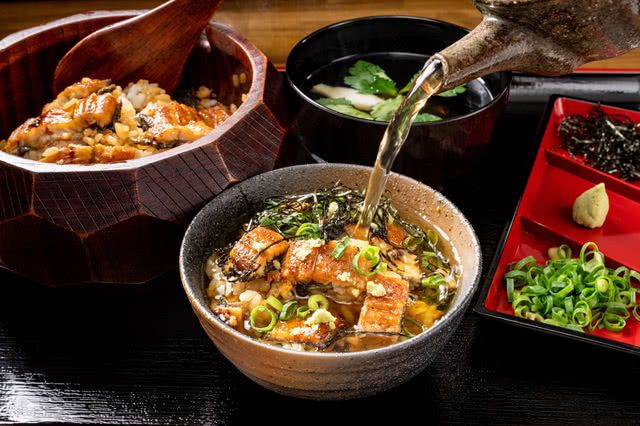
Hitsumabushi, a renowned specialty of Nagoya, showcases a delightful combination of rice served in a "hitsu" rice container with delectable strips of unagi kabayaki on top. Those trying Hitsumabushi can enjoy the dish in three different ways. First, they should divide the rice into four equal portions using a rice scoop. They can enjoy the first portion in its pure form, directly in a bowl. For the second serving, they can adorn it with an array of condiments such as chopped green onion, wasabi, seaweed, and more. This accentuates the rich flavor of the eel and gives it a refreshing taste. The third serving incorporates these condiments along with a drizzle of "dashi" (Japanese soup stock). Finally, the fourth serving can be enjoyed according to personal preference.
Three Tokyo Restaurants for Exceptional Unagi Delights
Unagi Hitsumabushi Bincho Mitsukoshi Ginza Location (Ginza)
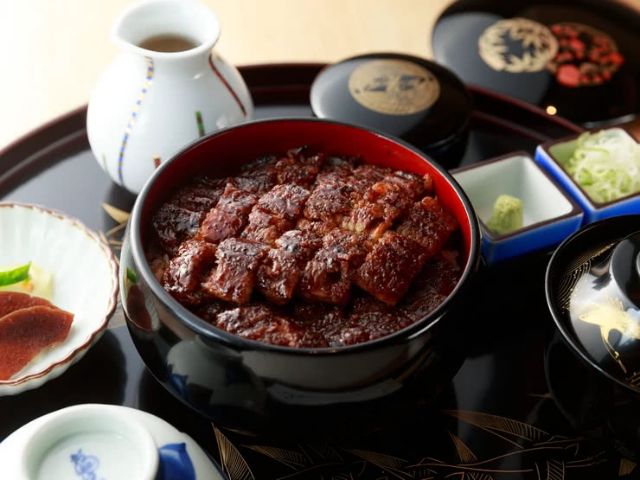

Unagi Hitsumabushi Bincho Mitsukoshi Ginza Location
Closed: Irregular
Average price: [Dinner] 5,000 JPY / [Lunch] 3,000 JPY
Access: 5-minute walk from Tokyo Metro Ginza Station/ 9-minute walk from JR Yurakucho Station
Address: 11F, Ginza Mitsukoshi, 4-6-16, Ginza, Chuo-ku, Tokyo Map
More Details Reservation
Unagi Charcoal-grilled Hitsumabushi Minokin Kanda Main Branch (Suehirocho)
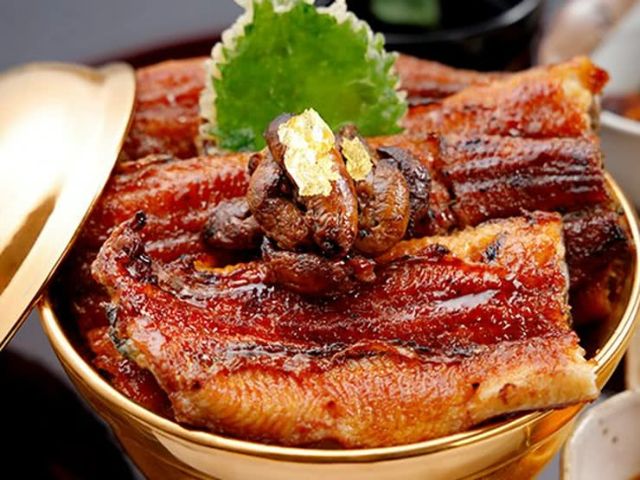
To complement the meal, the restaurant offers an extensive selection of wines and sake carefully curated by a sommelier who has a Wine Expert Excellence qualification, which ensures that guests can properly immerse themselves in the delightful marriage of eel and alcohol.
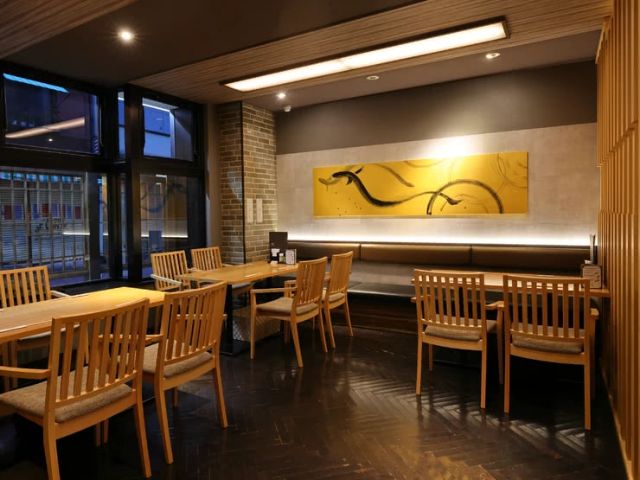
Unagi Charcoal-grilled Hitsumabushi Minokin Kanda Main Branch
Closed: None
Average price: [Dinner] 5,000 JPY / [Lunch] 4,000 JPY
Access: 1 minute walk from Exit 4 of Suehirocho Station. 5 minutes walk from Exit 6 of Yushima Station. 7 minutes walk from Electric Town Exit of Akihabara Station
Address: 1F, VORT Suehirocho II, 6-14-3, Sotokanda, Chiyoda-ku, Tokyo Map
More Details Reservation
Unagi Fujita Shirokanedai Branch (Shirokanedai)
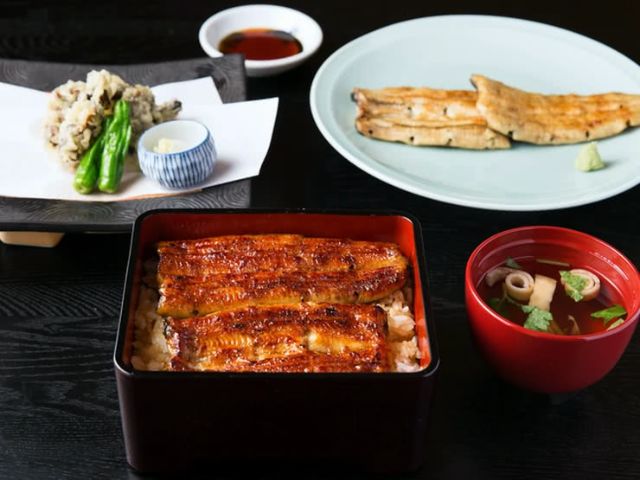
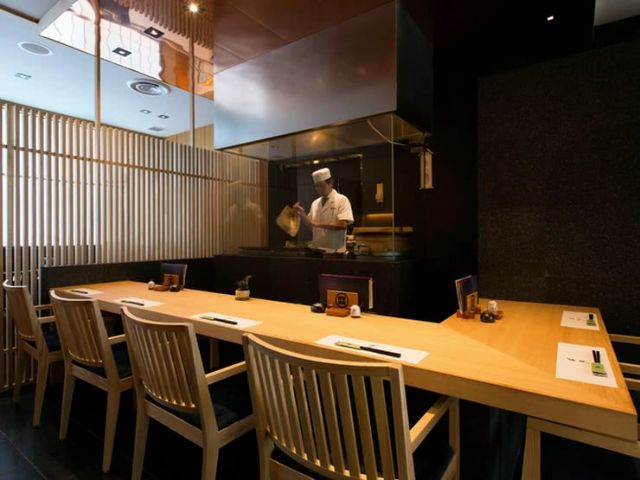
Unagi Fujita Shirokanedai Branch is the Tokyo branch of a longstanding unagi restaurant, with four generations of culinary heritage in Hamamatsu City, Shizuoka Prefecture, a renowned eel-producing region. Eels sourced from Lake Hamana, Shizuoka Prefecture, are given a unique treatment. They undergo a week-long swim in well water extracted from approximately 115 meters underground, imparting a refreshing quality devoid of any distinct odor. This makes this restaurant an ideal choice for those new to the eel dining experience. The eel is then grilled over binchotan charcoal, releasing a tantalizing aroma that heightens the authentic eel taste.
When dining here, customers should sample the refined flavors of Unaju (eel on rice in a lacquer box). Rank: YAMA (3,800 JPY), featuring a delicately sweet sauce, or indulge in the succulent richness of the Shirayaki (lightly broiled without any seasoning) (3,100 JPY), which allows them to savor the unique flavor and sweetness of the eel's fat directly.
Unagi Fujita Shirokanedai Branch
Closed: Monday
Average price: [Dinner] 6,000 JPY / [Lunch] 3,000 JPY
Access: 5 minutes walk from Exit 1 of Shirokanedai Station on Tokyo Metro Namboku Line or Municipal Subway Mita Line.
Address: 3F, IGAX Bldg., 4-19-21, Shirokanedai, Minato-ku, Tokyo Map
More Details Reservation
Disclaimer: All information is accurate at time of publication.
Thank you for reading our article.
Our goal is to take your culinary journey to the next level by helping you find the best restaurant. With SAVOR JAPAN, you can search and make reservations for
the Japanese Cuisine restaurants found in and around Tokyo that fill your needs.
Discover more Japanese Cuisine restaurants by area
- Tokyo Area
- Near Tokyo
- Kyoto and Osaka Area
- Hokkaido Area
- Northern Honshu (Tohoku)
- Central Honshu (Chubu)
- Western Honshu (Chugoku)
- Shikoku
- Kyushu
- Okinawa and Ryukyu Islands
Discover more restaurants to eat Japanese Cuisine by area
Keywords
Related Articles
New Articles
Categories
Cuisine
- Bars (23)
-
Japanese Cuisine (676)
- Kaiseki (45)
- Nabe (19)
- Okonomiyaki (24)
- Shabu Shabu (36)
- Soba (17)
- Sushi (137)
- Tempura (18)
- Teppanyaki (46)
- Shojin Ryori (3)
- Tonkatsu (12)
- Kushiyaki (10)
- Yakitori (46)
- Sukiyaki (35)
- Japanese Cuisine (341)
- Oyster (2)
- Sashimi/ Seafood (19)
- Unagi (eel) (30)
- Motsu Nabe (offal hotpot) (6)
- Mizutaki (chicken hot pot) (3)
- Oden (8)
- Kaisendon (seafood bowl) (9)
- Udon (2)
- Taverns(Izakaya) Cuisine (125)
- Western Cuisine (42)
- Italian/French Cuisine (95)
- Yakiniku/Steak (225)
- Chinese Cuisine (26)
- Ramen (Noodles) Cuisine (26)
- Cafe/Sweets (60)
- Other Asian Cuisine (5)
- Global/International Cuisine (7)
- Alcohol (45)
- Other (11)
Area
- Shikoku (10)
- Kyoto and Osaka (345)
-
Tokyo (460)
- Tokyo (286)
- Ginza (44)
- Roppongi (22)
- Shibuya (26)
- Shinjuku (47)
- Asakusa (20)
- Ebisu (12)
- Tsukiji (10)
- Tokyo Landmarks (4)
- Ueno (24)
- Akihabara (9)
- Ikebukuro (12)
- Jiyugaoka, Denenchofu, Nakameguro (9)
- Shimokitazawa (4)
- Kichijoji (3)
- Tachikawa (1)
- Omotesando, Harajuku, Aoyama (18)
- Akabane (1)
- Kagurazaka (4)
- Akasaka (10)
- Odaiba (1)
- Tsukishima, Harumi, Toyosu (3)
- Near Tokyo (100)
- Okinawa and Ryukyu Islands (58)
- Hokkaido (124)
- Northern Honshu (Tohoku) (31)
- Central Honshu (Chubu) (144)
- Western Honshu (Chugoku) (32)
- Kyushu (92)
Archives
- December 2025(9)
- November 2025(4)
- October 2025(3)
- September 2025(6)
- August 2025(11)
- July 2025(19)
- June 2025(18)
- May 2025(34)
- April 2025(43)
- March 2025(30)
- February 2025(36)
- January 2025(26)
- December 2024(69)
- November 2024(31)
- October 2024(15)
- September 2024(39)
- August 2024(65)
- July 2024(31)
- June 2024(54)
- May 2024(61)
- April 2024(28)
- March 2024(31)
- February 2024(42)
- January 2024(32)
- December 2023(20)
- November 2023(5)
- October 2023(11)
- September 2023(7)
- August 2023(18)
- July 2023(8)
- June 2023(8)
- May 2023(18)
- April 2023(15)
- March 2023(1)
- January 2023(1)
- April 2022(2)
- March 2022(2)
- February 2022(1)
- January 2022(1)
- July 2021(1)
- March 2021(1)
- February 2021(1)
- December 2020(1)
- October 2020(1)
- September 2020(2)
- August 2020(10)
- July 2020(6)
- June 2020(9)
- May 2020(11)
- April 2020(8)
- March 2020(8)
- February 2020(13)
- January 2020(9)
- December 2019(24)
- November 2019(8)
- August 2019(14)
- July 2019(15)
- June 2019(18)
- May 2019(17)
- April 2019(16)
- March 2019(22)
- February 2019(22)
- January 2019(26)
- December 2018(34)
- November 2018(40)
- October 2018(32)
- September 2018(11)
- August 2018(8)
- July 2018(6)
- June 2018(9)
- May 2018(10)
- April 2018(21)
- March 2018(74)
- February 2018(39)
- January 2018(26)
- December 2017(60)
Keywords
- Omakase
- Accessible
- Affordable
- All-You-Can-Eat
- Amazing Scenery
- anime
- Art
- Autumn
- Awards
- Beer Gardens
- Breakfast
- Chef Recommendations
- Cherry Blossoms
- Chinese
- Close To Station
- Condiments
- Counter
- Coupon
- Crab
- Culture
- Dassai
- Dates
- delivery
- Early Summer
- Editor's Recommendation
- English Available
- Event
- Expo
- Fall Leaves
- Family-Friendly
- Famous Restaurant
- Famous Tourist Spot
- Fast Food
- festival
- fireworks
- Flower Farm
- Free Wi-Fi
- French
- Great Location
- Guide
- Hibachi
- hotpot
- How To
- hydrangea
- Hygiene
- Illumination
- Italian
- Izakaya
- Japanese
- Japanese alcohol
- jingisukan
- Kaiseki
- Kappo
- Kushiage
- Kushikatsu
- Kyoto
- Late-Night
- Lunch
- Manners
- matsusakagyu
- Michelin
- mizutaki
- Model Course
- monjayaki
- motsunabe
- Mt.Fuji
- Multilingual Menus
- Nabe
- Narita Airport
- New Year
- Ninja
- Noodle
- Oden
- Okonomiyaki
- omotenashi
- Onsen
- Osaka
- Osaka Station
- Photogenic Site
- pizza
- PR
- Private Room
- Ramen
- ranking
- Recipe
- Regional Cuisine
- Resort
- Rice Bowl Dish (Donburi)
- sacred places
- Sake
- Sakura
- Sashimi
- sea urchin
- Setouchi Area
- Shabu Shabu
- sightseeing
- Signature Dish
- Soba
- Solo Diners Welcomed
- Spicy Food
- Spring
- Steak
- Summer
- Sunflower
- Sushi
- takeout
- Teppanyaki
- Terrace Seating
- Tokyo
- Tokyo Experiences
- Tokyo Skytree
- Tokyo Tower
- unagi
- UNESCO
- Vegan
- Vegetarian
- Wagyu
- What Popular Gourmet Sites Recommend
- Whisky
- Wine Bar
- Winter
- Wisteria
- Workshop
- World Heritage Site
- World Writers
- Yakiniku
- Yoshoku
- Yuba
- Zen
Discover Restaurants By Area
-

Tokyo Area
Japan's largest city, Tokyo, is the center of culinary culture in Japan. Countless Tokyo restaurants serve every kind of food imaginable and the Toyosu fish market keeps restaurants stocked with the nation's finest fish.
-

Near Tokyo
Coastal areas, mountains and valleys surrounding Tokyo are bursting with tourist destinations, such as hot springs and ski slopes, where many unique foods are only available locally.
-

Kyoto and Osaka Area
The cities of Kyoto and Osaka, together with their surrounding areas, have greatly influenced Japan's culinary culture since the 7th Century. The region is renowned for its entertainment, Kobe beef, and wide-ranging traditional dishes.
-

Hokkaido Area
The island of Hokkaido is home to wide-ranging produce of the finest quality, such as rice, meat, vegetables, fish and fruit. Popular dishes from Hokkaido include robatayaki (food slowly roasted on skewers) and Sapporo miso ramen.
-

Northern Honshu (Tohoku)
The northern end of Japan's main island, Honshu, is renowned for its seasonal fruit and vegetables, nation-leading harvest of fish (especially tuna from Ohma), and delicious beef from Yonezawa, Sendai and Yamagata.
-

Central Honshu (Chubu)
Chubu is in the center of Japan's main island, Honshu, and its culinary culture reflects its position between Japan's western and eastern halves. Delicious Hida beef, world-famous Mount Fuji and many acclaimed sake breweries are in Chubu.
-

Western Honshu (Chugoku)
Chugoku, on the southwest of Japan's main island, is rich with diverse produce. Many of its products are praised as Japan's best, including Matsuba crabs from Tottori and oysters from Hiroshima. Its pears and muscats are also top grade.
-

Shikoku
The mild climate of Shikoku is ideal for growing citrus fruit such as sudachi. Shikoku is also famous for Sanuki udon noodles, huge yields of tiger prawn from Ehime Prefecture and the best torafugu (tiger globefish) in the country.
-

Kyushu
Western culture was first introduced to Japan through Kyushu, Japan's third largest island, where the influence of Portuguese and other western cuisine influenced the creation of a colorful culinary tradition.
-

Okinawa and Ryukyu Islands
Okinawa, Japan’s southernmost prefecture, is a treasure trove of distinctive dishes and drinks that have become popular throughout Japan, including Okinawa soba, unique sushi toppings and Awamori distilled liquor.
